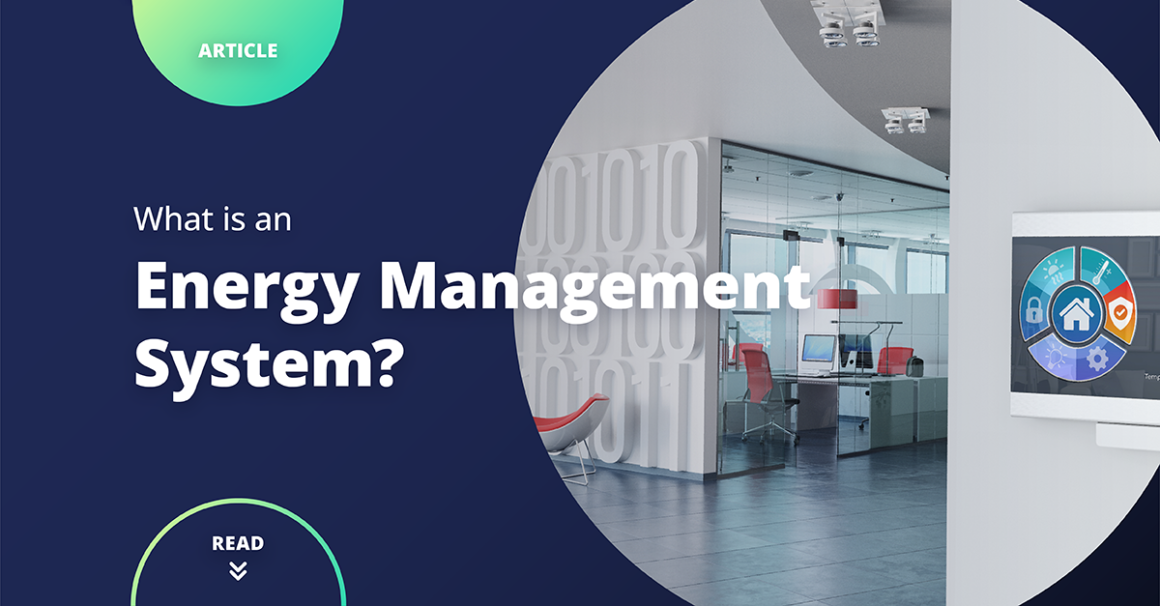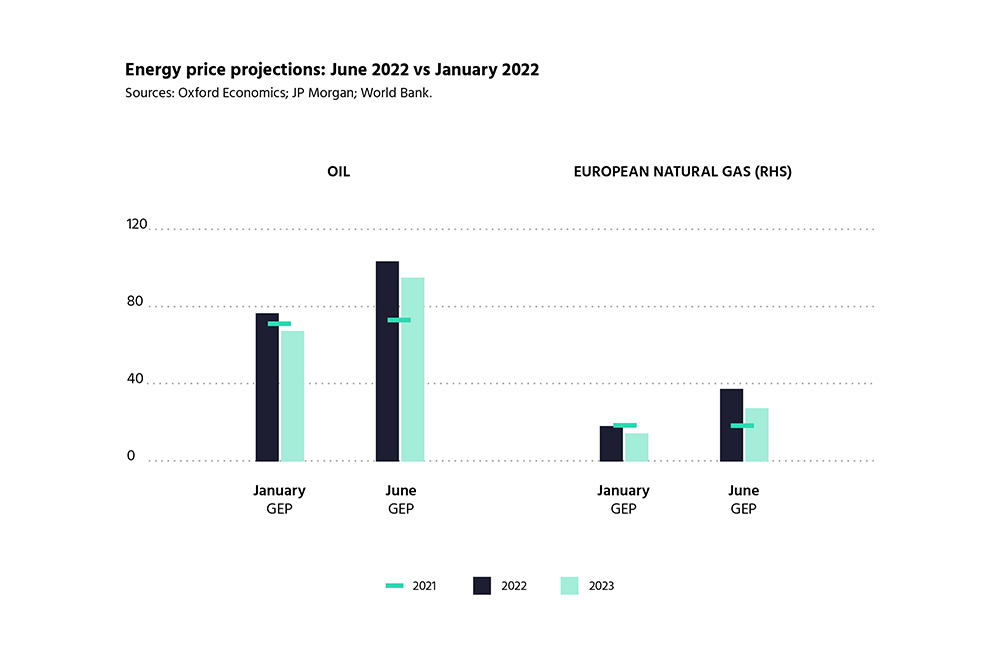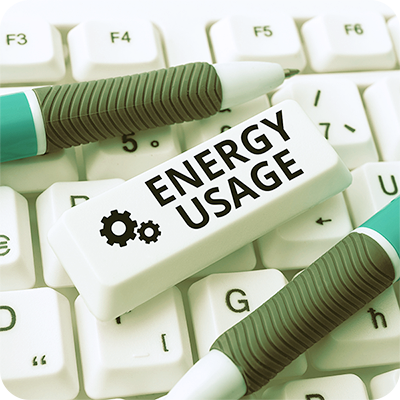What is an Energy Management System?

Energy prices have spiked to levels we haven’t seen in decades. Between January and April 2022, the World Bank’s energy price index increased by 26%, following a 50% increase between January 2020 and December 2021. Non-renewable energy resources like coal, oil, and natural gas have risen sharply in price as a result.
For example, from April 2020 to April 2022, crude oil prices increased by 350% – that’s the largest increase for any two-year period since the 1970s. Even more worrying is that experts don’t expect the situation to improve any time soon.

Even though renewable sources of energy like wind turbines and solar panels are slowly gaining popularity, it will take time for them to become as widely adopted as gas and oil. That makes searching for ways in which companies can limit their energy usage and reduce their bills a pressing matter.
One method of doing just that is by using an energy management system (EMS). They allow businesses to take control of their energy consumption and find how to reduce the amount of electricity they use. Even better, an EMS platform can also help businesses reduce their carbon footprints and boost their brand reputation.
But what is an EMS, and how do they work? Read on to find out.
What exactly is an energy management system?
An energy management system is a set of tools through which companies can understand and manage their energy use by controlling all their electric utilities and electricity-consuming devices. Additionally, it can help companies find where they use the most energy and suggest how to reduce usage in those places.
How does it work? A typical EMS platform consists of four elements:
- Sensors that continuously measure energy usage and send the data to the EMS platform.
- EMS interface through which users can monitor and manage their energy usage.
- A control system that transmits commands from the EMS user interface.
- Devices controlled by the EMS system, such as air conditioning units, fans, and lights.
Thanks to giving business owners sufficient information about their energy flows and consumption levels of their devices, EMS systems can help with decisions about energy activities and how to lower consumption without hurting productivity or efficiency.

For example, an EMS system could notify a manager that a piece of electric equipment in the office is malfunctioning and using far more energy than it should. Replacing such devices with newer and more energy efficient ones (e.g. efficient lighting systems) can reduce consumption levels and, consequently, save business owners money.
Additionally, business owners can use an EMS application to:
- Define their energy goals and KPIs, as well as track their energy-saving progress (including reductions in energy costs).
- Track both historical and real-time data on power flow and usage.
- Spot trends in energy consumption and predict peak hours/monthly consumption accordingly.
- Collect and combine energy data from multiple sources (spreadsheets, automation systems, invoices, metering systems, IoT devices, etc.)
- Generate detailed reports on energy consumption, emissions, usage predictions, and savings.
All of the above features can help organizations gain more insights into how they use electricity in their building and where they could optimize energy usage in order to save money.
But there’s one more where an EMS can help – reducing pollution and waste that is directly linked to energy usage, lowering the carbon footprint, and boosting brand image. As customers are becoming more aware of climate issues, they are now far more likely to support environmentally friendly companies.
For example, sustainability is rated as an important purchase criterion for 60% of customers. In addition, according to a Statista survey from 2020, 45% of surveyed consumers stated that they were interested in finding brands that were sustainable or environmentally responsible.
Investing in energy-related improvements, improving efficiency, and reducing your organization’s carbon footprint therefore won’t just bring environmental benefits, but can actually give you a competitive edge.

Types of energy management systems

Energy management systems can be used anywhere – from office buildings, restaurant sites, hospitals, hotels, and schools to factories and even regular houses. For the electric vehicle industry, energy management systems and methods of energy storage are essential as well.
The main features are actually pretty similar regardless of type. Energy management solutions help building managers, employees, or tenants control all electronic pieces of equipment in their building – like heating, air conditioning, lighting systems, or any other devices connected to the electricity grid.
Smart meters installed in the building will monitor the usage of all devices in the building and then send the data to a central system. From the system’s interface, users can have a look at their power usage or take actions, such as automatically turning off unnecessary devices.
Additionally, some EMSes provide alerts or notifications when energy use exceeds certain thresholds and allow users to schedule energy-consuming activities for low-demand hours, such as overnight. However, there can be slight differences in features and capabilities based on the industry the EMS is designed for.
Let’s look at a manufacturing and industrial sector EMS. Many industrial facilities and factories consume a lot of energy often without usage being monitored or controlled, meaning they use more power than necessary. In the US, the industrial sector accounts for 35% of end-use energy consumption and 33% of total energy consumption.

However, considering the (recent) volatility of energy prices, the operating costs of many industrial companies have soared. This means they may struggle to pay their bills which would be a huge problem when any interruption in energy supply could force them to halt production altogether.
A manufacturing-specific EMS can show factory owners where the largest amounts of energy are being wasted and help them resolve those problems. But that’s just the beginning. Using an EMS platform, also allows factory owners to:
- Better understand their energy flows and energy balance in the factory building.
- Control energy expenditure by implementing energy conservation measures.
- Quickly find out about any potential equipment failures, electrical faults, and capacity overloads through automated alerts.
- Ensure that companies comply with industry requirements regarding energy usage and conservation.
EMS solutions are also increasingly being used by healthcare companies, since energy shortages, power cuts, and system failures can have dramatic consequences for patients. Thanks to EMSes, healthcare companies can lower the amount of energy used without compromising patient comfort or safety.
They can also be immediately alerted whenever there’s an abnormal energy usage in any of their equipment. As a result, healthcare buildings can operate more efficiently while reducing both their energy costs and risk to patients.
The benefits of energy management systems
With skyrocketing energy costs, reducing energy consumption and monthly bills have become some of the biggest concerns for commerce businesses as well as factories, schools, and hospitals. Almost everything we do and use relies on electricity, thus impacting both our energy bills and our carbon footprints.
However, EMS platforms can help organizations manage their energy more efficiently and become “greener”, while also bringing significant reductions in energy costs. What other benefits of EMS platforms are there?
1. Defining energy requirements
The reporting and analytical features inside EMSes can help property managers and business owners understand energy consumption patterns. Everything from when the most energy is needed to what processes or devices use the most power is visible on the main EMS dashboard, providing exactly the information needed to adjust energy usage.
EMS platforms can also help businesses identify and reduce their energy waste without negatively affecting core operations. An EMS can break down energy usage into separate processes, showing how much power each one requires and what the possible ways to reduce usage are.

2. Reduction in operational costs
One of the main reasons why businesses install energy management systems is to reduce their monthly bills. By using these solutions, most companies can easily save up to 10% on their energy bills.
The savings come from a few places. First, EMS sensors monitor all connected devices (lighting, heating and cooling, ventilation, etc.) 24/7 and can immediately send a warning whenever there is a suspicious change in energy usage patterns.
Second, many EMS platforms also have preventive maintenance features that can notify managers if a specific device or equipment might malfunction in the near future. Spending on maintenance costs now can prevent far more costly equipment failures in the future.
Finally, keeping unnecessary devices turned off when not in use (for example, switching off the lights and HVAC after employees have left) and reducing energy consumption during peak hours can also result in significant savings for building owners.
3. Optimization of expenses
Increasing energy and utility bills can significantly strain budgets, especially for smaller companies. When they have high energy bills to pay, then they will need to cut other expenses such as marketing costs or device/machine upgrading.
Further, if business owners don’t know how much energy they currently use, they won’t be able to predict how much their next bill will be in order to ring-fence sufficient funds.
When using an EMS, on the other hand, businesses can reduce energy wastage and in turn, their operating costs. But that’s not all – generating energy usage predictions based on the EMS data, can help managers estimate how much they will have to pay for future bills and prepare their budgets in advance.
4. Building a positive brand image
One of the more surprising potential benefits of an EMS platform is that it can actually give you a nice boost to your brand reputation. The majority of organizations in the world are now keen on reducing their carbon footprints – especially because that’s something their customers want to see.
By optimizing energy consumption and minimizing waste, companies can show their customers that they are serious about protecting the environment and are acting responsibly in this regard. This helps build better relationships with customers, partners, and potential investors.
5. Making businesses more resilient
Considering how volatile the energy market has become and the growing risks of energy shortages and potential power cuts on the horizon, it is essential to learn how to manage energy more effectively
Identifying and eliminating energy leaks, setting energy priorities for essential business processes, and learning how to manage their consumption better can help businesses minimize the impact of rising energy prices and power cuts.
How to choose an energy management system
As you can see, having an EMS in your building can not only reduce your energy bills, but can also make your business more resilient during a crisis. However, with so many energy management solutions available, how do you choose the best one? We’ve compiled four tips to help you select an EMS that matches your needs.
1. Know your requirements and goals
Before you start looking at the available energy management platform options, you should think carefully about why you want to implement an EMS system in the first place and what features you need the platform to have.
- Do you want to collect and record energy measurement data on electricity consumption only, or would you also like to monitor water and gas usage?
- Do you want the solution to be integrated with existing monitoring systems?
- Are there any industry-specific features you need the EMS to have?
- Do you want the solution to work as an IoT platform or rather like traditional, on-premises software?
When you choose a platform carefully, you increase the chances of it working seamlessly with your office devices and providing you with the data you need to curb your energy spending. On the other hand, picking the first EMS software available might end up being a costly investment with only a few minor benefits.

2. Go for real-time energy data updates
When comparing EMS platforms, check how often you’ll be getting updates on energy usage. While gathering usage data on a monthly or weekly basis might give you some idea of your overall consumption, it might be hard to spot any sudden spikes in energy usage or energy leaks in this manner.
If you were able to monitor your energy data 24/7 though, you would quickly notice any suspicious changes in the building’s energy consumption and performance.
Managers can also use real-time data and monitoring to identify and manage energy spikes throughout the day. Reviewing these usage trends and peaks at all times helps managers make informed decisions about how to reduce equipment energy consumption and when to schedule energy-consuming activities.
3. See what else the EMS can do besides monitoring usage
An energy management solution’s main role is to monitor your organization’s data usage and display the results on a dashboard. But modern applications can do far more than just that, so you shouldn’t focus solely on monitoring functions. It is worth checking and comparing the other features of EMS platforms, such as:
- automatic alerts on sudden energy spikes or changes in performance
- a mobile app for monitoring and managing the platform remotely
- identifying new energy leaks and suggesting how to fix them
- reducing energy usage during peak hours and scheduling more energy-intensive activities at times when energy prices are lower
- custom reports
- automated fault detection and preventive diagnostics
If you need any industry-specific features then you should also add those to your requirements list and search for an EMS with the relevant functionalities.
4. Consider who will use the EMS platform
As you browse EMS platforms, keep in mind who will be using them. If you want your employees or tenants to use your EMS solution to control energy usage themselves, the application should be intuitive enough that they can easily find and understand their energy usage data and how to reduce consumption.
If the solution will be used by management or energy specialists, it’s better to look for a more complex system with more advanced features and more detailed analytical data that could be used later to improve energy efficiency of the building.
Conclusion
It has never been so important to reduce our energy consumption as it is today. According to long-term forecasts, gas and electricity prices will remain high in 2023 and only gradually start to drop in 2024. As a result, we might soon face energy shortages or power cuts if we don’t curb our consumption and wastage.
Ever-increasing operational costs should also push companies to start saving energy. Prioritizing renewable energy sources is the way to go, but it will take a while for them to become viable alternatives to gas and coal. What can we do to find the right mix of energy usage and reduce our bills now?
Using an EMS platform that will help us utilize energy sources efficiently might be the solution to our growing energy consumption problems. According to research, EMS solutions can save businesses up to 50% on energy costs while also significantly reducing their carbon emissions.
If you’re looking for an EMS but need expert advice on which one would be suitable for you or how to implement it, Codibly has you covered. Depending on your needs, we can help you choose the right platform, implement it in your building, or build a custom energy management solution.
You can count on Codibly to find a solution that will fit your needs and solve your current problems with energy consumption.
contact us
Need expert guidance on your next energy project?
Reach out to us and discover how Codibly can offer tailored solutions to drive your business.